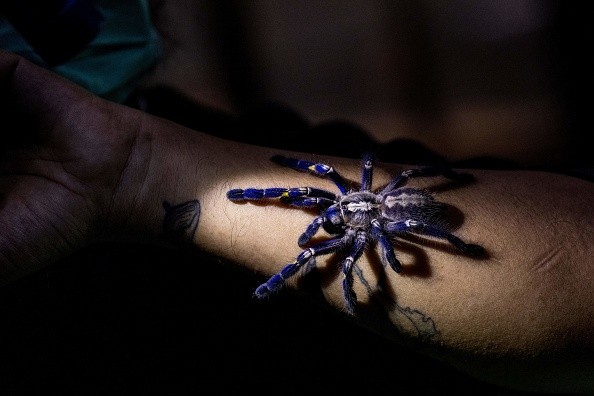Noble false widow spiders, deadly arachnids that look like black widows, are not endemic to the United Kingdom.
In the 1800s, they anchored a trip from Madiera and the Canary isles, but they have created a residence in their new place.
Top Irish scientists have discovered that the poisonous noble false widow spider, which may be found in Irish homes, can now feed on bats hundreds of times its weight.
Bats found on a web in an attic

Wildlife artist Ben Waddams discovered an "amazing find" at his house in England, according to the National University of Ireland Galway.
A spider in the vicinity of Waddams' attic ate a little, juvenile bat caught in its web.
According to the Irish Mirror, the first bat, a small pup, was entirely immobilized, its limbs silk-bound to the body. It had become somewhat shriveled and discolored as a result of the spider eating on the leftovers.
A second, much larger adult bat was also trapped and entangled in the web, but because it was still alive, the bat was freed.
This is the first time a false widow spider has been observed preying on a bat or a mammal anywhere in the globe and one that is significantly larger than the spider's size.
"In more exotic parts of the world, scientists have been documenting such predation events by spiders on small vertebrates for many years, but we are only now beginning to realize just how commonly these events occur," said Dr. John Dunbar, Irish Research Council post-doctoral fellow, Venom Systems Lab, Ryan Institute, NUI Galway and lead author of the study as per The Guardian.
They're seeing similar interesting circumstances on their veritably own doorstep now that those alien species have begun themselves in Ireland and the United Kingdom.
Pipistrelle bats, which are protected in the UK, dropped dramatically in the 20th century, with populations dropping by 70% between 1978 and 1993, although conservation efforts have lately resulted in a slight rebound.
The noble false widow spider was originally observed in southern England in 1879 and has since expanded its range and population density, migrating northwards through Scotland and westward into Wales and Ireland.
During that period, the species has expanded over Europe, East Asia, North America, and South America.
Read more: Spiders Can Fly Thousands Of Miles By Harnessing Earth's Electric Fields, Research Finds
The dangers of Noble false widow spider to people
The Noble False Widow spider has public health consequences, according to NUI Galway research.
A DNA database has gone built by the exploration team to help doctors dealing with cases to establish the species connected using genetic analysis.
The False Widow spider has become one of the most prevalent species of spider seen in and near urban areas in portions of Ireland and Britain.
A team of NUI Galway scientists has released a new study demonstrating that Noble False Widow spiders may administer a bite that warrants hospitalization.
For many years, spider and healthcare experts have discussed the harm presented by the Noble False Widow spider.
This new study, published in the international medical journal Clinical Toxicology, indicates that some bite victims have symptoms identical to actual black widow spider bites and that some severe instances necessitate hospitalization.
The Noble False Widow spider or Steatoda nobilis, which originated in Madeira and the Canary Islands, has the potential to become one of the world's most invasive spider species.
It was originally recorded in Britain about 140 years ago, but in recent decades, the species' population has exploded, considerably extending its range and density.
Read more: Carnivorous Garden Spiders Are Actually Omnivores, Researchers Find
© 2024 NatureWorldNews.com All rights reserved. Do not reproduce without permission.





